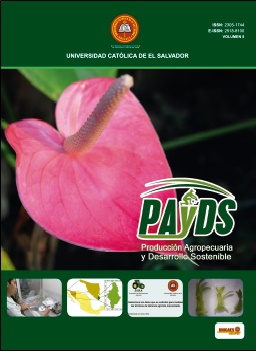Modeling of mechanized agricultural tillage strategies for various crops through a computer decision-making algorithm
DOI:
https://doi.org/10.5377/payds.v5i0.5430Keywords:
Educational software, farming, agronomy, crops, learning, decision taking.Abstract
Considering that the documentation applied to agricultural tillage techniques in El Salvador is limited, despite the fact that these are fundamental for the establishment and success of crops that have economic exploitation purposes, an algorithm was developed that was able to elaborate tillage plans with In order to support decision-making in the field. In soil preparation, many variables interact, such as different levels of humidity, presence of rock layers at different depths, soil texture and depth of fertile layer, types of machinery, extension of the area To cultivate, among others.
The mathematical combination of all these variables resulted in a very high number of options, so it was estimated that the possibility that crops have problems due to lack of knowledge about the use of agricultural machinery is high. The algorithm called SIMA, by its initials of Simulator of Agricultural Mechanization was endowed with a web interface from which the user can introduce the conditions of the field; And the software, for its part, was able to perform the validations and calculations necessary to provide an efficient and reliable tillage plan. The services of this algorithm are available to Internet users through the website http://www.catolica.edu.sv/decanatos/iya/sima/
Producción Agropecuaria y Desarrollo Sostenible, Vol. 5, 2016: 61-76
Downloads
936
Downloads
Published
How to Cite
Issue
Section
License
© Producción Agropecuaria y Desarrollo Sostenible
Copyright of the articles is transferred to the journal Producción Agropecuaria y Desarrollo Sostenible
As a user of this journal, you have:
- Open access to consult the information contained in this issue
- Permission to copy, distribute, display, perform or combine past practices in the use of information, provided it is strictly non-profit.
This journal uses a CC BY-NC license





